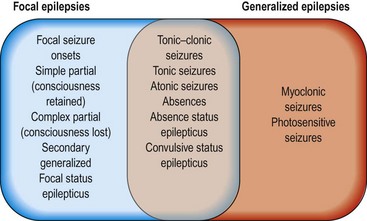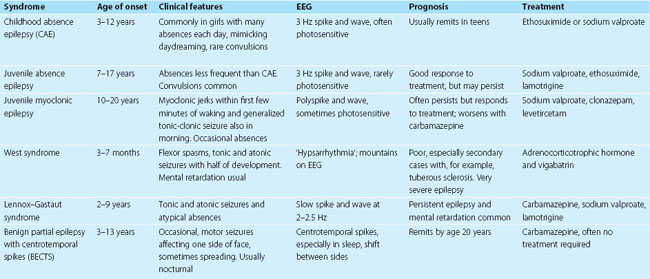Epilepsy I
Diagnosis
A seizure is a paroxysmal neurological event caused by the abnormal discharge of neurones. Epilepsy is defined as a tendency to recurrent seizures, that is two or more seizures. Epilepsy is not a single disease but it is a symptom of congenital or acquired CNS disease in the same way as weakness is a symptom in a range of different disorders. Different types of epilepsy can be classified according to different features, including seizure type, age of onset, prognosis and cause, and are more appropriately called the epilepsies.
Diagnosis
The diagnosis of epilepsy is clinical, depending on the history from the patient and, critically, from any witnesses of the attacks. This can be supported by investigations such as an EEG, but the main contribution of the EEG is in syndrome classification. The differential diagnosis of blackouts is discussed on page 44.
Classification of seizures and epilepsy syndromes
Much of the confusion about the classifications in epilepsy arise because of a failure to appreciate that there are two interrelated classifications: a classification of seizure type (Fig. 1) and a classification of epilepsy syndromes (Table 1). Patients may have more than one type of seizure. The epilepsy syndrome includes diagnosis of seizure type and additional information, mostly relating to aetiology, including age, EEG and neuroimaging results. Where possible, patients’ epilepsy should be classified by epilepsy syndrome rather than seizure type, which takes into account these other factors. The old terms ‘petit mal’ and ‘grand mal’ do not fit easily into this classification and should not be used.
There are three broad categories of epilepsy syndromes:
Patients who have had only a few attacks may not be classifiable into an epileptic syndrome.
Stay updated, free articles. Join our Telegram channel

Full access? Get Clinical Tree




